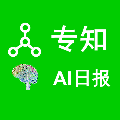Machine-generated artworks are now part of the contemporary art scene: they are attracting significant investments and they are presented in exhibitions together with those created by human artists. These artworks are mainly based on generative deep learning techniques. Also given their success, several legal problems arise when working with these techniques. In this article we consider a set of key questions in the area of generative deep learning for the arts. Is it possible to use copyrighted works as training set for generative models? How do we legally store their copies in order to perform the training process? And then, who (if someone) will own the copyright on the generated data? We try to answer these questions considering the law in force in both US and EU and the future alternatives, trying to define a set of guidelines for artists and developers working on deep learning generated art.
翻译:机器创造的艺术作品现已成为当代艺术场景的一部分:它们吸引了大量投资,并且与人类艺术家创作的艺术作品一起在展览中展出。这些艺术作品主要基于基因深层次的学习技术。同样,由于这些工艺的成功,在运用这些工艺时也会产生一些法律问题。在本篇文章中,我们考虑了艺术基因深层学习领域的一系列关键问题。是否有可能将版权作品用作基因化模型的培训?我们如何合法存储其复制品以开展培训过程?然后,谁(如果有人)将拥有所生成数据的版权?我们试图回答这些问题,同时考虑美国和欧盟的现行法律以及未来的替代方法,试图为从事深造艺术的艺术家和开发者制定一套指南。




